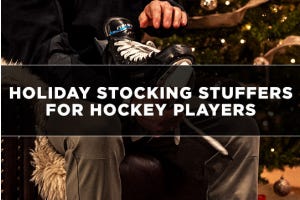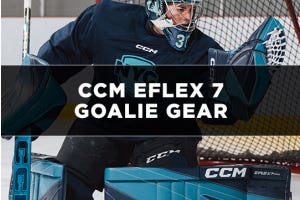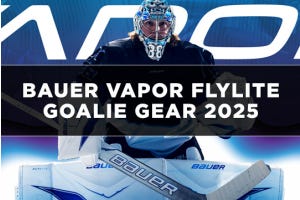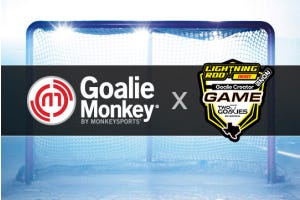How to be a Better Hockey Goalie
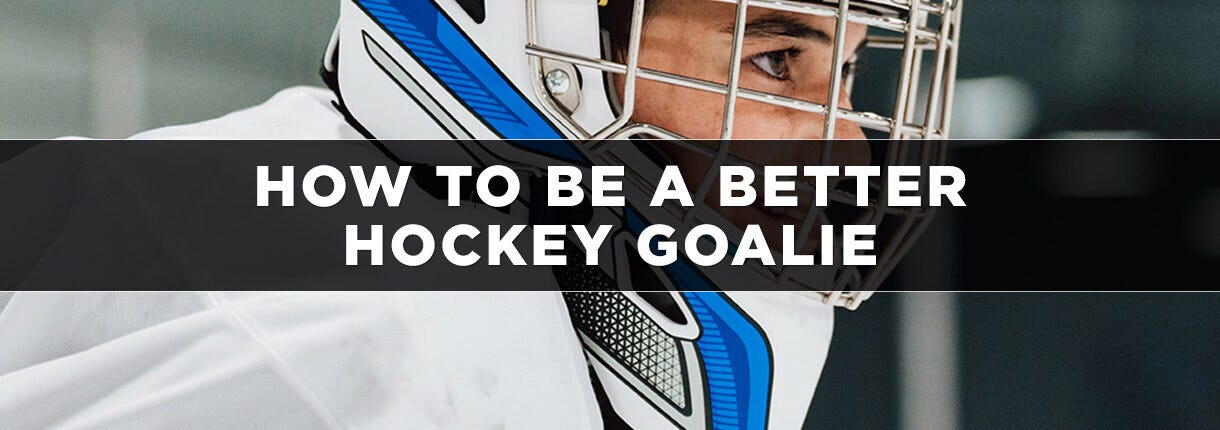
Elevate your goaltending skills with our expert tips and techniques. Ideal for hockey players aspiring to improve their goaltending abilities. Learn today!
Tips and Techniques to Become a Better Hockey Goalie
The Basics of Becoming a Better Hockey Goalie
How to be a better hockey goalie involves mastering the basics of stance, style, and positioning. Each element is crucial for effective net coverage and making saves.
Stance: The foundation of goaltending starts with a proper stance. Goalies should stand with feet shoulder-width apart, knees slightly bent, and their glove and blocker positioned to cover the upper net. The stick should be on the ice to block low shots and manage rebounds.
Positioning: Positioning is fundamental for maximizing net coverage and minimizing shooting angles for opponents. Goalies must adjust their depth depending on the play:
- Defensive Depth: Used in scenarios with cross-ice passes or close plays, where goalies play closer to the net, allowing for quicker lateral movements and better coverage against low, in-close shots.
- Base Depth: This is the standard stance where the goalie positions themselves midway between the crease and the goal line, maintaining a neutral position during even-man situations.
- Aggressive Depth: When facing a distant shot or an isolated shooter, goalies move out of the net to reduce the visible shooting area, cutting down angles and making it harder for shooters to find space.
Puck Tracking: Effective puck tracking is crucial for anticipating shots and reacting accordingly. Goalies must constantly keep their eyes on the puck, maintaining awareness of its location and the positions of players around them. This skill helps in predicting play developments and positioning themselves optimally.
Angles: Understanding angles is key to reducing the opponent’s scoring chances. Goalies need to align themselves with the puck and the center of the net, moving in sync with the puck to cover the largest possible area of the net and limit the shooter’s options.
Reflexes and Basic Saves: Quick reflexes are essential for making saves, especially in fast-paced situations. Goalies should practice making basic saves like catching, blocking, and stick saves to respond instinctively to various types of shots. Regular drills can enhance these reflexive responses, improving overall reaction times.
By mastering these skills—positioning, puck tracking, understanding angles, and honing reflexes—goalies can significantly improve their performance on the ice. Each element plays a crucial role in effective goaltending, helping goalies anticipate plays, reduce scoring opportunities, and make critical saves under pressure.
Advanced Hockey Goalie Techniques
To elevate their game, hockey goalies must master several advanced techniques that go beyond basic skills. Here’s a look at essential methods to help goalies handle complex game situations more effectively:
Butterfly Save: This technique involves dropping to the knees and spreading the pads wide to cover the lower part of the net. It’s effective for blocking low shots and rebounds, utilizing modern goalie pads to seal the ice and reduce shooting angles.
Breakaways: Facing a breakaway requires quick decision-making and precise movement. Goalies should stay square to the shooter, match their speed while retreating, and be ready to react to dekes or sudden shots. Patience is crucial to forcing the shooter to make the first move.
Poke Checking: This aggressive move uses the stick to disrupt the puck carrier’s control, especially during close encounters or breakaways. Effective poke checking can catch opponents off guard and prevent scoring opportunities.
Back Door Plays: These are designed to exploit a goalie’s lateral movement by passing the puck to a player positioned near the goal post, opposite the puck’s origin. Goalies must anticipate these plays, stay aware of off-puck players, and use quick, powerful lateral pushes to cover the open side.
Physical and Mental Conditions for Goalies
Success as a hockey goalie is not just about mastering techniques on the ice; it also heavily relies on physical fitness, flexibility, and mental toughness. Here’s how each aspect plays a crucial role and some tailored advice for goalies:
Physical Fitness
Goalies require explosive power, endurance, and agility. A well-rounded fitness routine should focus on:
- Strength Training: Building core and leg strength is vital for stability and quick lateral movements. Exercises like squats, lunges, and deadlifts are excellent for lower body power, while planks and Russian twists enhance core stability.
- Cardiovascular Conditioning: High-intensity interval training (HIIT) improves stamina and ensures goalies can maintain peak performance throughout the game. Incorporating sprint intervals and cycling can boost cardiovascular health.
- Plyometrics: These exercises, such as box jumps and lateral hops, improve explosive power and quickness, crucial for rapid save responses and recovery.
Flexibility
Flexibility allows goalies to execute wide lateral saves and maintain agility. Key exercises include:
- Dynamic Stretching: Incorporating leg swings, arm circles, and hip openers in warm-ups can improve range of motion and reduce injury risk.
- Yoga and Pilates: These practices enhance overall flexibility and core strength, crucial for reaching challenging saves and maintaining balance.
- Foam Rolling: Regular foam rolling helps release muscle tightness and improve flexibility in key areas like the hips and groin, essential for effective butterfly saves.
Mental Toughness
Mental resilience is essential for handling the pressure of high-stakes games. Goalies must cultivate:
- Next Shot Mentality: This mindset focuses on treating each shot as a separate event, preventing past goals or mistakes from impacting future performance. Goalies need to quickly reset and maintain confidence, viewing each shot as a new challenge.
- Visualization: Practicing visualization techniques can help goalies anticipate plays and enhance their reaction times. Visualizing successful saves builds confidence and prepares the mind for real-game scenarios.
- "Being in the Zone": This state of focused immersion allows goalies to perform without overthinking. Techniques like deep breathing and mindfulness can help maintain this focus, especially during high-pressure moments.
For goalies, combining physical fitness, flexibility, and mental toughness creates a comprehensive approach to excelling on the ice. Tailored workouts and mental strategies ensure goalies are prepared to face each shot with confidence and agility, maintaining consistency and peak performance throughout the game. For more insights and training routines, resources like Stop It Goaltending offer valuable guidance tailored to goaltenders.
Equipment Tips for Hockey Goalies
For hockey goalies, the right equipment is crucial for both peak performance and protection. Here’s a guide to selecting and maintaining essential goalie gear:
Choose the Right Mask
Importance: The mask is vital for head protection against high-velocity shots.
Advice: Opt for a snug-fitting mask with modern safety features. Models like the Bauer 950 are renowned for their durability and advanced impact-absorbing foams, ensuring both comfort and protection.
Maintenance: Regularly inspect the mask for cracks or damage, especially after heavy impacts, and replace if necessary to maintain safety standards.
Select Quality Leg Pads
Importance: Leg pads shield the goalie from shots and provide essential coverage for effective saves.
Advice: Choose pads based on your style of play—ribbed pads for better deflection control or flat-faced pads for broader blocking surface. Ensure they fit well to facilitate quick lateral movements and stability.
Maintenance: Always dry pads thoroughly after each use to prevent mold and maintain their shape. Regularly check and tighten straps to ensure they stay secure during play.
Find the Right Glove and Blocker
Importance: These are crucial for catching and deflecting pucks, protecting your hands while maintaining agility.
Advice: Select gloves and blockers that offer a balance of protection and flexibility. The fit should be snug but allow for free hand movement. Look for models with reinforced areas to handle repeated impacts.
Maintenance: Clean and dry them after each game to prevent odors and material breakdown. Inspect for any tears or signs of wear, especially in the palms and fingers.
Invest in a Protective Chest Protector
Importance: The chest protector guards the torso from powerful shots and falls.
Advice: Ensure it provides comprehensive coverage without restricting movement. Look for adjustable straps to customize the fit and maximize comfort.
Maintenance: Regularly clean the chest protector and examine it for signs of wear or damage, particularly in the high-impact areas like the shoulders and elbows.
Select Durable Skates
Importance: Skates are foundational for a goalie’s movement, providing the base for stability and quick lateral shifts.
Advice: Goalie-specific skates, such as those with reinforced toes and a lower cut, offer better mobility and protection. A snug fit is crucial to avoid blisters and ensure effective power transfer.
Maintenance: Sharpen the blades regularly to maintain optimal edge quality for quick starts and stops. Dry thoroughly after each use to prevent rust and material degradation.
Use a Reliable Stick
Importance: The stick is essential for puck handling, shot blocking, and maintaining balance.
Advice: Choose a stick with the right flex and length for your play style. Composite sticks are preferred for their lightweight and durability.
Maintenance: Regularly tape the blade to maintain its grip and protect it from wear. Store in a dry place to prevent warping and ensure longevity
Learning from the Pros: Goalie Inspiration
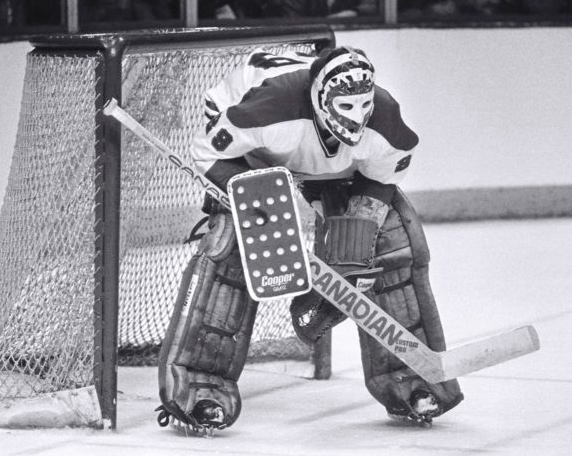

Physical: Professional and NHL goalies maintain peak performance through a combination of rigorous on-ice and off-ice training. Their routines include working with off-ice trainers to enhance their physical conditioning, focusing on strength, agility, and flexibility through targeted exercises like plyometrics, weight training, and yoga. Mental toughness is equally crucial, and goalies often engage mental coaches to help them develop strategies for staying focused, managing stress, and maintaining a positive mindset. On the ice, specialized goalie coaches work with them to refine techniques, improve save percentages, and perfect their positioning and movements.
Mental: Goalies also focus intensely during games, employing techniques like visualization and breathing exercises to stay calm and composed. They adopt a "next shot" mentality, allowing them to move past any mistakes quickly and maintain consistency throughout the game. Being a professional off the ice involves a strict regimen of nutrition, rest, and recovery to ensure their bodies are always ready for the physical demands of the sport. By integrating these comprehensive training strategies, goalies can stay motivated and focused on their goals, exemplifying professionalism both on and off the ice.
How To Be a Better Hockey Goalie FAQs
What are the first steps to becoming a hockey goalie?
Start by mastering the basic stance and movements. Ensure you have the proper equipment that fits well. Enroll in beginner goalie clinics to learn foundational skills and techniques from experienced coaches. Watching professional goalies and studying their techniques can also provide valuable insights.
How can I improve my reaction speed as a goalie?
Reaction speed can be enhanced through drills that focus on hand-eye coordination and quick reflexes. Off-ice exercises like using a reaction ball, playing racquet sports, and practicing with a tennis ball against a wall can be very effective. On-ice, work on drills that simulate game scenarios requiring quick movements and decision-making.
What off-ice training is beneficial for hockey goalies?
Off-ice training should include a mix of strength training, cardio, and flexibility exercises. Focus on core strength, leg strength, and explosive movements through plyometrics. Yoga and stretching routines help with flexibility and injury prevention. Regular sessions with a personal trainer specializing in sports can tailor a program specific to a goalie’s needs.
How do I choose the right goalie pads?
Selecting the right goalie pads involves considering your playing style and ensuring a proper fit. Ribbed pads are good for better deflection control, while flat-faced pads provide a larger blocking area. Try on different brands and models, and consult with experienced players or coaches for recommendations. Comfort and mobility are key factors in making the right choice.
What mental strategies do successful goalies use during high-pressure situations?
Successful goalies use several mental strategies to stay focused under pressure. Visualization techniques help them prepare for different game scenarios. Breathing exercises and mindfulness practices can keep them calm and composed. Adopting a “next shot” mentality ensures they move past mistakes quickly and maintain a consistent performance. Working with a sports psychologist can also provide tools to enhance mental toughness. Most pro goalies have a person that they can talk to that helps them mentally.




